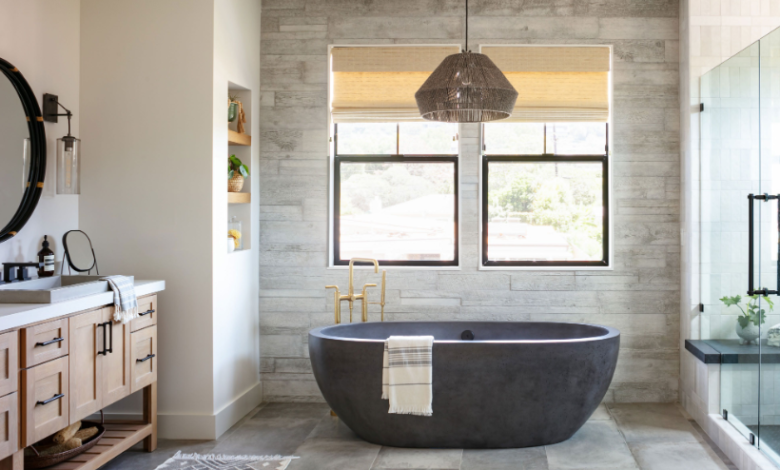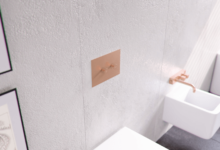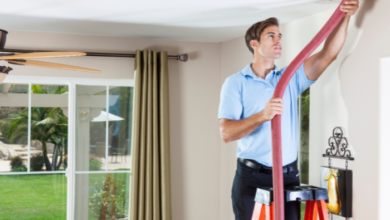Transform Your Bathroom with a Stunning Pedestal Tub: The Ultimate Guide

The Allure of Pedestal Tubs: A Timeless Statement Piece
Why Pedestal Tubs Are More Than Just a Bathtub
Pedestal tubs are not merely functional fixtures within the bathroom; they epitomize luxury and sophistication, acting as a centerpiece that elevates the aesthetic of the entire space. The very sight of a beautifully crafted pedestal tub can transform an ordinary bathroom into a tranquil retreat, invoking a sense of elegance and serenity. Their distinctive design combines elements of style and comfort, making them an ideal choice for homeowners looking to make a statement.
Unlike standard tubs that might be integrated into the bathroom’s cabinetry or fittings, a pedestal tub stands proud and unapologetic, drawing the eye and inviting relaxation. These tubs often feature a raised design on a sturdy base, which not only enhances their visual appeal but also provides a commanding presence in the room. The spacious interior of a pedestal tub allows for leisurely soaks, encouraging the kind of indulgent self-care that many seek in today’s fast-paced world.
Moreover, pedestal tubs symbolize a return to classic designs reminiscent of vintage spa experiences. They harken back to an era when the bathroom was a sanctuary, a dedicated space for rejuvenation and reflection. This nostalgic allure resonates with homeowners who appreciate the integration of history and style, making pedestal tubs a common choice in both traditional and modern home designs.
Exploring the Design Heritage of Pedestal Tubs
The design heritage of pedestal tubs is rich and varied, tracing back to the Victorian era, where they first gained popularity due to their beauty and functionality. In those times, bathtubs were often seen as a luxury item reserved for the well-to-do, designed to be displayed prominently in homes rather than hidden away. This tradition of showcasing the tub continues today, with contemporary designs often reflecting the craftsmanship and elegance of their ancestors.
Early designs of pedestal tubs were predominantly made of cast iron and porcelain, materials chosen for their durability and refined aesthetic. These materials provided excellent insulation, keeping bathwater warmer for longer periods, further enhancing the bathing experience. As styles evolved, so did the materials used, with modern pedestal tubs now being crafted from a range of options, including acrylic, fiberglass, and even luxurious stone, pushing the boundaries of both design and practicality.
Today’s pedestal tubs draw inspiration from a variety of historical styles ranging from classic clawfoot designs to minimalist modern interpretations. Each style carries with it its own set of design philosophies and purposes, appealing to diverse tastes and preferences in home décor. Understanding this heritage not only enhances appreciation for these pieces but also aids homeowners in selecting a tub that beautifully complements their unique style narrative.
Modern Innovations in Pedestal Tub Design
While the traditional aesthetic remains a cornerstone of pedestal tub offerings, modern innovations have revolutionized their functionality, making them more appealing to today’s design-conscious homeowners. Manufacturers are now creating tubs that not only focus on elegance but also on practicality and user comfort. This includes ergonomic designs that reduce back strain and innovative features such as integrated heated surfaces that maintain water temperature and built-in lighting for ambiance.
Water-saving technologies have also made their way into the world of pedestal tubs. Newer models come equipped with features that not only stem from aesthetic considerations but respond to ecological demands. By utilizing materials and designs that maximize efficiency without compromising luxury, these tubs cater to homeowners who want both sustainability and style in their bathrooms.
Furthermore, customization has become a defining trend in modern design. Many manufacturers now allow for a range of customization options in size, shape, color, and finish, enabling homeowners to create a unique piece that fits their personal vision. These innovations have made it easier than ever to find a pedestal tub that aligns not just with aesthetic preferences, but also with practical needs and lifestyle considerations.
Choosing the Perfect Pedestal Tub for Your Style
Different Materials: Weighing the Pros and Cons
Choosing the right material for your pedestal tub is crucial, as it affects both aesthetic appeal and long-term performance. The most commonly used materials include cast iron, acrylic, stone, and fiberglass, each with distinct characteristics. Cast iron tubs, for example, are renowned for their durability and insulating properties. They retain heat exceptionally well, offering a luxurious soak experience, yet they can be heavy and cumbersome to install, requiring robust flooring support.
Acrylic tubs, on the other hand, have surged in popularity due to their lightweight nature, ease of installation, and versatility in design. They can be molded into various shapes and sizes, allowing for greater flexibility in accommodating different bathroom layouts. However, they may not retain heat as effectively as cast iron, meaning you may need to add hot water more frequently during a long soak.
Stone tubs, including those made from marble or solid surface materials, bring an unmatched opulence to any bathroom. Their unique textures and natural beauty can serve as a striking focal point. However, they often come with a higher price tag and require specific care to maintain their surfaces. Finally, fiberglass tubs are typically the most affordable option and can be molded into creative forms. Though cost-effective, they may not offer the same level of durability or heat retention as the others.
Ultimately, the choice of material should reflect your personal aesthetic, lifestyle needs, and budget. It is essential to weigh the pros and cons before making a decision, so you can confidently select a pedestal tub that aligns with your vision for your bathroom.
Finding Your Ideal Size: Space Considerations in Design
Space is a fundamental consideration when selecting a pedestal tub, as the available area within your bathroom will dictate both the size and style of your installation. It’s paramount to accurately measure the area where you wish to place the tub, as this will help you determine the feasible dimensions that align with both practicality and your desired aesthetic. Pedestal tubs come in a variety of sizes, and while larger units can provide a more luxurious soaking experience, they can overwhelm smaller spaces and disrupt the flow of the room.
Considerations should include both the actual footprint of the tub itself and the necessary clearance around it for accessibility. For instance, a clawfoot tub may require more clearance for the legs and may not be suitable for tight spaces. Additionally, think about how the tub will integrate with other fixtures such as the sink and toilet, ensuring a balanced layout and unhindered movement in the room.
Smaller bathrooms can benefit from compact pedestal tub designs, which maintain the visual appeal of a larger unit while conserving space. Multi-functional designs may include integrated shelves or curved shapes that allow for a snug fit. On the other hand, if your bathroom has ample space, larger structures can create a spa-like ambiance, allowing you to indulge in a truly opulent bathing experience. Finding the perfect size involves balancing your aesthetic desires with the practical realities of your bathroom’s layout, ensuring a harmonious integration of style and function.
See also: Why 4K Laser Projectors Are the Future of Home Cinema
Color and Finish: Complementing Your Bathroom Aesthetic
The color and finish of your pedestal tub can drastically influence the overall atmosphere of your bathroom, acting as a pivotal element in your design scheme. While traditional white is perhaps the most commonly recognized color for bathtubs, contemporary designs have expanded into a spectrum of options, from sleek blacks and soft grays to rich hues and vibrant colors. Choosing a tub that either complements or contrasts the other elements in your bathroom can create visual drama or a serene, cohesive look.
Finishes also play a significant role in both appearance and functionality. Glossy finishes can impart a modern flair, with their reflective surfaces adding brightness and space to the room. Matte finishes, conversely, can provide a refined, understated touch, often evoking a more natural, spa-like quality. Textured finishes can add an artistic touch to the tub, creating interest and enhancing the tactile experience.
When considering color and finish, it is essential to reflect on your bathroom’s existing themes and aesthetic. If you have a modern, minimalist approach, sleek metallics or monochrome shades might be the best fit. In contrast, a rustic or traditional bathroom may thrive with the warm hues of a traditional porcelain tub. Additionally, trends towards bold color statements can allow for a centerpiece that asserts personality while still harmonizing with the overall décor. Ensuring your pedestal tub reflects your unique style while still fitting within your broader design narrative is integral to crafting a bathroom that feels cohesive and inviting.
The Art of Installation: Transforming Your Space
Preparation: What You Need to Know Before the Big Change
Installing a pedestal tub requires careful planning and preparation to ensure a smooth transformation process. Before diving into installation, it’s critical to gather all necessary tools and materials. This includes not just the tub itself, but also plumbing supplies, caulk, leveling tools, wrench sets, and potentially tile or flooring materials if changes are being made in the surrounding area. A clear outline of the process, including timelines and any potential disruptions to daily life, will help set expectations.
Additionally, considering structural factors is key. Assessing whether the existing flooring can support the added weight of the tub and water is essential to prevent future problems. If the tub will be positioned on a second floor or attic bathroom, additional support beams may need to be installed to accommodate this. Consulting with a contractor or structural engineer may be beneficial at this stage to ensure compliance with building codes and safety standards.
Finally, setting a budget that accounts for all costs involved including labor, materials, and any unexpected expenses will help to minimize surprises during the installation process. While investing in high-quality materials and professional expertise can add to the upfront costs, they often pay off in the long-term durability and beauty of your installation.
Professional vs. DIY: Navigating Your Installation Options
When it comes to installing a pedestal tub, homeowners are often faced with the choice between enlisting professional help and undertaking a DIY project. For those with experience in home renovations and plumbing, a DIY installation may seem appealing. Not only can this save costs on labor, but it allows for a personalized touch throughout the process. However, it’s essential to remain realistic about your capabilities and the complexity of the installation.
For instance, if you are familiar with plumbing, electrical, and structural work, and feel confident in managing the accompanying challenges, a DIY route can be manageable and even rewarding. However, for individuals lacking experience or for those with more elaborate tub designs, hiring professional contractors is often the safer and more effective route. Experts can handle complicated plumbing configurations, ensuring proper installation that prevents leaks and other significant issues down the line.
Weigh the pros and cons of both routes considering your specific skills, time frames, and budget. Hiring professionals may add to immediate costs but can offer peace of mind and ensure high standards of installation. Conversely, if you do choose the DIY path, be sure to research extensively, engage with detailed guides, and possibly seek advice from experienced friends or professionals to ensure a successful installation.
Plumbing Considerations: Ensuring a Flawless Setup
Proper plumbing is critical to the successful installation and functioning of any pedestal tub. Considerations involve not just the connections for hot and cold water, but also the drain setup and overflow configuration. Ensuring that the plumbing meets the manufacturer’s specifications is essential to maintain warranty coverage and avoid future complications. Depending on your bathroom’s existing plumbing configuration, adjustments may need to be made to facilitate compatibility with your new tub.
When it comes to the drain system, proper placement is key. It should be strategically located to ensure easy access while allowing seamless water drainage. If your space has an incompatible drain layout, it may require substantial modifications. It’s often advisable to consult a plumber to evaluate the existing infrastructure and recommend necessary adaptations that will secure both performance and adherence to plumbing codes.
Attention to detail at this stage will save significant headaches in the future, as failing to address plumbing considerations adequately can lead to leaks, water damage, and costly repairs. Ensuring that all connections are secure and that the fixtures themselves are compatible is paramount in delivering both a functional and beautiful pedestal tub experience.
Care and Maintenance: Keeping Your Pedestal Tub Pristine
Cleaning Techniques to Preserve Your Tub’s Beauty
Preserving the beauty and functionality of your pedestal tub requires regular maintenance and care through proper cleaning techniques. The cleaning regimen will depend heavily on the material of your tub, as different finishes require unique methods to prevent damage and maintain luster. For instance, acrylic tubs should be cleaned with non-abrasive cleaners to avoid scratching the surface, while cast iron and enamel tubs can tolerate a more robust approach, provided they are not treated with harsh chemicals that may dull their shine.
Establishing a routine that includes regular cleanings with a soft cloth to remove soap scum and water spots will help mitigate the buildup of grime. It’s essential to avoid rough sponges or brushes that could damage the finish. For deep cleaning sessions, a solution of warm water mixed with vinegar or baking soda can work wonders, providing a gentle yet effective cleaning method that won’t harm the finish or your flooring.
Additionally, staying on top of maintenance by immediately addressing spills or stains will ensure long-term beauty and functionality. Regular inspections for chips, cracks, or other signs of wear can also assist in catching problems before they escalate, encouraging timely repairs to prolong the life of your tub.
Common Issues and How to Troubleshoot Them
As with any fixture in your home, issues may arise with your pedestal tub over time. Common problems include leaks, drips, stains, and wear on surfaces. Identifying the nature of these issues promptly can save you significant time and costs associated with larger repairs down the line. For instance, noticing puddles or dampness around the base of your tub could indicate a worn seal or plumbing issue that requires immediate attention.
In cases of staining, identifying the source is crucial. Some stains may be caused by hard water deposits, so investing in water softening solutions may be required to mitigate future caking or buildup. For other stains, such as those caused by soap or body oils, adopting a regular cleaning routine can help greatly in reducing their occurrence.
If you find yourself facing persistent issues that DIY troubleshooting cannot resolve, it’s wise to consult professionals who can provide deeper insights and solutions. Hiring an expert ensures that the underlying problems are addressed effectively, safeguarding the longevity and enjoyment of your pedestal tub for years to come.
Longevity Tips: How to Extend the Life of Your Pedestal Tub
To truly cherish the indulgence of your pedestal tub and ensure it remains a valuable feature in your home, implementing longevity tips is imperative. Firstly, establishing a regular cleaning schedule will help you avoid the buildup of grime and wear over time, preserving both the aesthetic and structural integrity of the tub. Avoid using abrasive cleaners or tools that can scratch or damage the surface, and instead opt for gentle, pH-neutral cleaning agents that effectively maintain the tub’s pristine appearance.
Secondly, always be aware of the water temperature you’re using. Extreme changes in temperature can cause certain materials to warp or crack, especially in acrylic and fiberglass tubs. Gradually adjusting the water temperature before immersing yourself in the tub can help prevent sudden thermal shocks that could compromise its integrity over time.
Lastly, consider investing in a quality tub mat or rug to protect your flooring and prevent slipping while enhancing your bathroom’s style. This practical addition can both provide comfort while stepping out of the tub and create a buffer to protect the area around it from water damage. By taking these precautions and being conscientious, you can significantly extend the life of your pedestal tub, allowing you to enjoy its artful presence and relaxing utility for many years to come.





